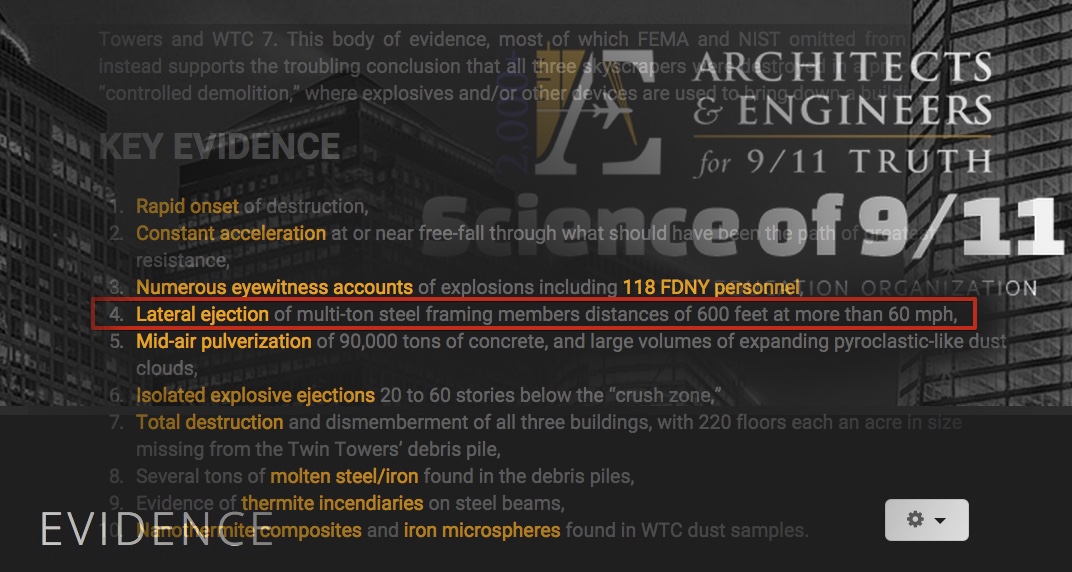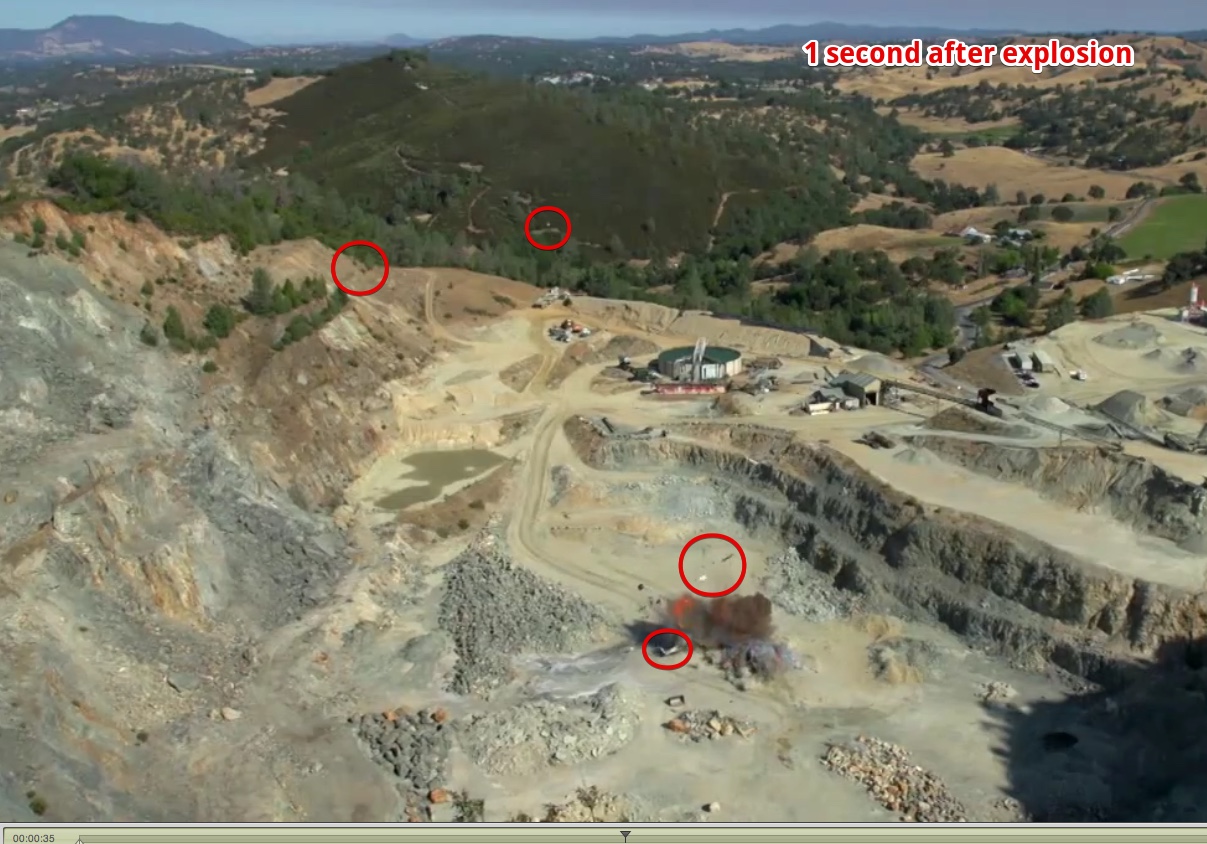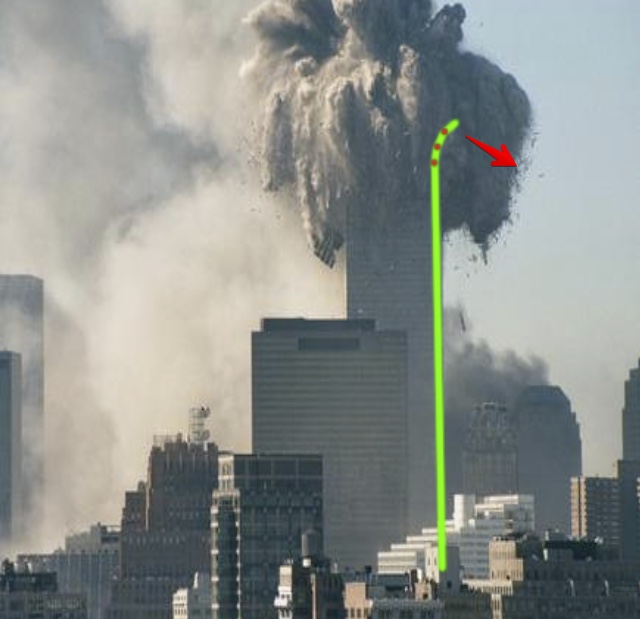Let's apply the laws of Conversation of Momentum and Conversation of Energy to the problem: How much explosives does it take to throw one ton (1000 kg) at 60 mph = 27 m/s?
When a massive object (let's denote its mass as m(o)) is propelled by a chemical propellant (mass = m(p)), such as an explosive substance, that's attached to it, two things happen at the same time:
1. Object o is accelerated to some velocity v(o) in one direction.
2. Reaction products p of the propellant are accelerated to some velocity v(p) in the opposite direction.
(For nit-pickers: The products move in several directions, and velocity of individual molecules may differ greatly; it is actually the center of mass of the products cloud that matters here. We'll come back to this later. Ignoring this velocity distribution is actually a "explosive-friendly" simplification. Another nitpick: If the propellant acts off-center on the object, it will impart angular momentum. I'll ignore that here completely, as it makes calculations more cumbersome; it can be shown though that IF that makes a difference, it makes Mr. Griscom's problems even greater)
Now, since the system of object+propellant before the "explosion" was at rest, it had a linear, lateral momentum of zero. After the explosion, the system momentum must still be zero to satisfy the law of Conservation of Momentum (CoM).
That law requires in this situation that
(1) m(o)*v(o) = -m(p)*v(p).
Lets play with some numbers to see what that means practically: Let's say we have a steel piece of 1000 kg, and an explosive charge of 1 kg. After the explosion, the object moves at 60 mph (I am quoting your number) = 27 m/s (I prefer SI units). Let's plug this into equation (1):
(2) 1000 kg * 27 m/s = 1 kg * v(p)
and solve for velocity of the explosive's products:
(3) v(p) = 27,000 m/s
That's about 90x the speed of sound. Quite unreal.
Similarly, a charge of 10 kg would have to result in a gas velocity of 2,700 m/s.
Now we have to look at the other law, Conversation of Energy (CoE)! All the energy to accelerate both the object and the propellants comes from the chemical energy of the explosive - let's denote that as E(chem). In the explosion event, this energy is transformed into several components:
- Kinetic energy of the object - E(kin, o)
- Kinetic energy of the explosive products - E(kin, p)
- Heat
- Deformation of steel
- Sound, seismic, ... energies
The latter three are difficult to evaluate, but must be >0 (again, by ignoring that term or assuming it to be insignificantly low, we make things easier on Mr. Griscom; it's a "explosive-friendly" simplification). Let us denote them jointly as E(rem) (rem="remaining"), then we can write down the applicable CoE equation as
(4) E(chem) = E(kin, o) + E (kin, p) + E(rem) = 1/2 m(o) * v(o)^2 + 1/2 m(p) * v(p)^2 + E(rem)
Let's plug in numbers for the first example (1 kg of explosives) as we derived them from CoM considerations (3):
(5) E(chem) = 1/2 * 1000 kg * (27 m/s)^2 + 1/2 * 1 kg * (27,000 m/s)^2 + E(rem) = 364,864,500 J + E(rem)
So 1 kg of the explosive would have to have more than 364 MJ energy. This is impossible. There exists no chemical substance that even comes close. Most high explosives, and also thermite, have a specific energy in the vicinity of 4 MJ/kg.
Let's try the same with 10 kg of explosives:
(6) E(chem) = 1/2 * 1000 kg * (27 m/s)^2 + 1/2 * 10 kg * (2,700 m/s)^2 + E(rem) = 36.814,5 MJ + E(rem)
Now the result approaches the realistically possible: The result means that the explosive would have to release a specific energy of about 3,7 MJ/kg, and would explode at 2,700 m/s (9x speed of sound in air). Both numbers are realistic for efficient high explosives (albeit still a bit out-of-range for thermitic materials).
In practice, it gets worse than that: As I remarked earlier, the explosive's products would not all shoot out in the same direction at the same speed; some would shoot faster, some slower; some exactly opposite to the movement of the steel object, but much at an angle. These effects all tend to increase the required kinetic energy of the products. Also, there will of course be some loss to heat, deformation work etc. - it only works out if the explosive does relatively little damage to the steel, and produces no heat (little spare energy to melt steel, for example, and form iron-rich spheres

).
In short: To accelerate an object to 60 mph, you need significantly more than 10 kg of high explosives (whether conventional or "thermitic" doesn't make much difference) per 1000 kg of object mass. The perimeter columns high on the impact-and-fire floors weighed more than 2 tons per floor (more in the lower floors, as plate thickness increased for higher loads). You probably know that these columns came in pieces of about 11 m (36 ft), so we are getting close to 7 tons per perimeter column. A perimeter panel, consisting of 3 adjacent columns, welded together with spandrel plates, weighed close to 30 tons. To propel one column to 60 mph, you need more than 100 kg of high explosive. For a full panel (and much of what was found in the WFC winter garden was full panels) you'd need in excess of 400 kg of high explosives. If you want to do that with some hypothetical kind of "quiet" explosives, you'd need yet again much much more (factor: 10+) to avoid the 9x speed of sound problem.
A detonation of 10 kg of high explosives makes a HUGE imprint on the sound track. You certainly have listened to videos of actual explosive demolitions? What you hear there are mostly charges of only some ounces of explosives. They are incredibly, AWESOMELY loud every time, and are far and away the most outstanding feature of every such video.
Propelling steel ejecta to 60 mph would require MUCH MUCH larger explosive charges than anything ever employed at any CD, and it would be almost entirely a waste of energy, as there is no reason to "eject" anything at all. You want to put as close to 100% of the chemical energy into material deformation, 0% to kinetic energy.

 ).
).

